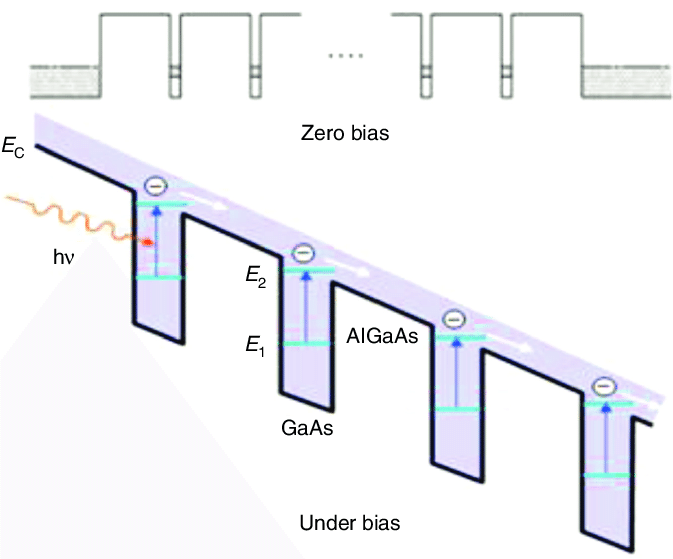
In photodetectors, incident photons interact with the electrons in the material and change the electronic charge distribution. This perturbation of the charge distribution generates a current or a voltage that can be measured by an electrical circuit. Standard quantum-well infrared photodetectors are based on single-bound state quantum wells, and electronic transitions between such bound state and the continuum are used for photon detection. Incident photons excite bound electrons into the continuum contributing to what is called the photocurrent, which is the detection signal measured by such devices. The well width and composition, and thus the depth of the bound state, are designed to match with the energy of the photons to be detected.
In the perturbation approach, the presence of slowly varying optical excitation and the absorption probability amplitudes are simply proportional to the matrix elements of the quasi-momentum operator between field-free electronic states, given by density matrix equations or Bloch functions. By defining non-periodical Bloch states, interband absorption spectra can be obtained corresponding to the electron and hole density of states for confined structures such as quantum wells and wires .